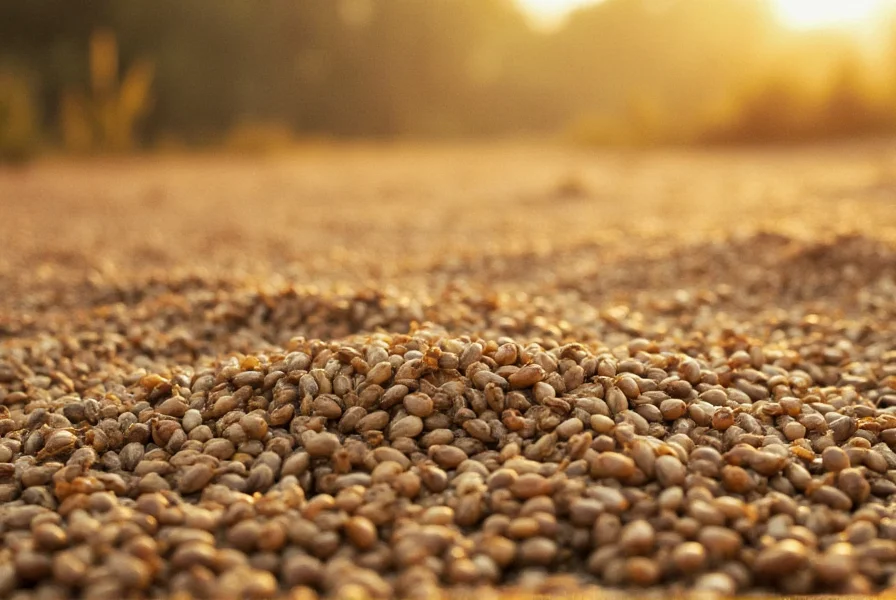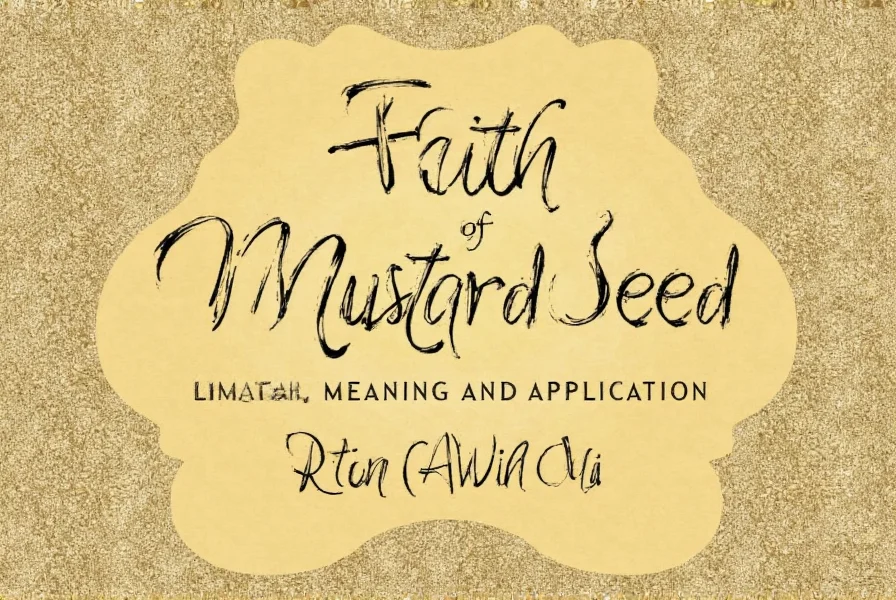The \"faith of mustard seed\" represents one of Jesus' most powerful teachings about the nature and potential of authentic belief. Found in both Matthew 17:20 and Luke 17:6, this concept uses the tiny mustard seed as a metaphor for how even the smallest amount of genuine faith can produce remarkable outcomes when properly directed.
Biblical Context and Original Meaning
When Jesus spoke about mustard seed faith, He was addressing His disciples' inability to heal a boy with seizures. In Matthew 17:14-21, the disciples had tried and failed to cast out a demon, prompting Jesus to explain: \"Because of your unbelief; for assuredly, I say to you, if you have faith as a mustard seed, you will say to this mountain, 'Move from here to there,' and it will move; and nothing will be impossible for you.\"
The mustard seed, though among the smallest seeds in Jesus' agricultural context, grows into a substantial plant. This wasn't about the size of one's faith but rather its authenticity and proper object. Jesus emphasized that genuine faith—regardless of perceived quantity—connected to God's power can overcome significant obstacles.
| Biblical Reference | Exact Quote | Context |
|---|---|---|
| Matthew 17:20 | \"Because you have so little faith. Truly I tell you, if you have faith as small as a mustard seed, you can say to this mountain, 'Move from here to there,' and it will move. Nothing will be impossible for you.\" | Response to disciples' failed exorcism |
| Luke 17:6 | \"He replied, 'If you have faith as small as a mustard seed, you can say to this mulberry tree, 'Be uprooted and planted in the sea,' and it will obey you.\" | Teaching on faith and forgiveness |
Historical Understanding of Mustard Seeds
In first-century Palestine, the mustard seed represented the smallest seed commonly known. The black mustard plant (Brassica nigra) grows from a seed approximately 1-2 millimeters in diameter into a shrub reaching 6-10 feet tall. This dramatic transformation from minuscule beginning to substantial plant made it an effective metaphor.
Jesus frequently used agricultural imagery familiar to His audience. The mustard seed's reputation for vigorous growth despite its tiny size provided the perfect illustration for how authentic faith operates—not through human effort but through connection to divine power.

Common Misinterpretations of Mustard Seed Faith
Many modern interpretations mistakenly emphasize the amount of faith rather than its authenticity. The teaching doesn't promise that any wish will come true if one can muster enough belief. Instead, it reveals that faith's effectiveness comes from its object—God's power—not the believer's emotional intensity.
Another frequent misunderstanding treats this as a formula: \"Say the right words with enough faith and mountains will move.\" This magical approach contradicts the teaching's essence, which focuses on trust in God's character rather than manipulating spiritual laws.
Practical Applications for Modern Life
Understanding the true meaning of mustard seed faith transforms how believers approach challenges. When facing difficult circumstances, the question isn't \"Do I have enough faith?\" but rather \"Am I trusting in the right object with genuine dependence?\"
Those exploring how to develop mustard seed faith discover it grows through:
- Studying God's character and past faithfulness
- Practicing dependence in small matters
- Remembering previous experiences of divine help
- Connecting with community that reinforces trust
The biblical interpretation of mustard seed parable reminds us that faith isn't about our capacity but about God's reliability. This perspective brings freedom from performance-based spirituality and anchors believers in the steadfast nature of God rather than the fluctuating strength of human emotions.

Related Biblical Teachings on Faith
Mustard seed faith connects with other scriptural principles about belief:
- Hebrews 11:1 defines faith as \"the substance of things hoped for, the evidence of things not seen\"
- James 2:17 emphasizes that \"faith without works is dead\"
- Mark 9:24 shows the honest prayer, \"I believe; help my unbelief!\"
These passages collectively paint a picture of faith as active trust that manifests in obedience and perseverance, not merely emotional certainty. The mustard seed teaching fits within this broader biblical framework of faith as relational dependence rather than psychological technique.
Developing Authentic Faith in Daily Practice
Those seeking to apply mustard seed faith in daily life find practical value in these approaches:
First, acknowledge your limitations while recognizing God's unlimited power. The disciples' failure came not from insufficient faith size but from misdirected faith. Second, focus on God's character rather than your emotional state. Third, practice \"small seed\" faith in everyday situations before expecting mountain-moving results.
Understanding the meaning of mustard seed faith in the Bible transforms how believers approach prayer, challenges, and spiritual growth. It releases them from the pressure of manufacturing intense feelings and redirects attention to the trustworthy nature of God.
What does 'faith of a mustard seed' actually mean in biblical context?
The 'faith of a mustard seed' refers to the quality rather than quantity of faith. Jesus used the tiny mustard seed to illustrate that genuine, authentic faith—regardless of perceived size—properly directed toward God's power can accomplish what seems impossible. It's not about how much faith you have, but the object of your faith.
Where in the Bible is the mustard seed faith mentioned?
The mustard seed faith teaching appears in Matthew 17:20 and Luke 17:6. In Matthew, Jesus tells his disciples they could move mountains with faith as small as a mustard seed. In Luke, He states they could command a mulberry tree to be uprooted and planted in the sea.
Does mustard seed faith mean I can move literal mountains?
The mountain-moving reference was metaphorical, representing seemingly impossible obstacles. Biblical scholars understand this as teaching about faith's potential to overcome significant challenges through God's power, not a promise of literal geological changes. The focus is on God's ability to work through authentic faith.
How can I develop mustard seed faith in my daily life?
Develop mustard seed faith by focusing on God's character rather than your emotional state, practicing trust in small matters, remembering God's past faithfulness, and connecting with supportive community. Authentic faith grows through relationship with God, not through trying to manufacture intense feelings or believing faith is about quantity rather than quality.
What are common misunderstandings about mustard seed faith?
Common misunderstandings include believing faith's effectiveness depends on quantity rather than authenticity, treating it as a formula to manipulate spiritual laws, or expecting automatic results regardless of God's will. The teaching emphasizes trust in God's power, not human effort or emotional intensity, and always operates within God's sovereign purposes.











 浙公网安备
33010002000092号
浙公网安备
33010002000092号 浙B2-20120091-4
浙B2-20120091-4